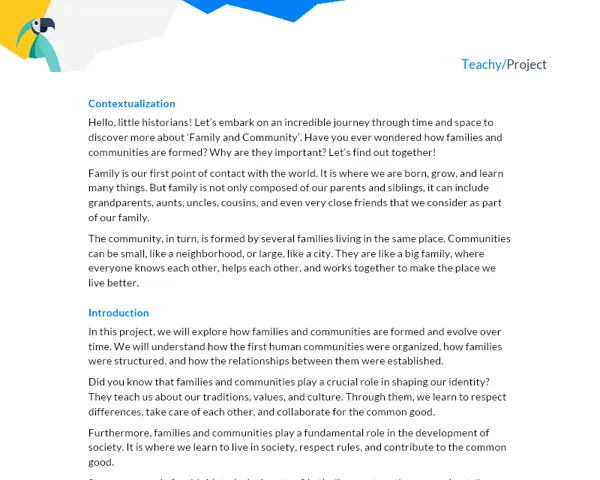Context
Hello young historians! Are you ready to embark on an adventure into the past? History is a fascinating subject that allows us to understand how societies have developed over time. And one of the most interesting ways to discover the past is through Historical Experience Journals. But what does that mean?
When we talk about Historical Experience Journals, we are referring to the practice of documenting events, discoveries, reflections, and lessons learned. This is a valuable tool for historians because it allows them to have a clearer view of what happened in the past. And more importantly, Historical Experience Journals also helps us to understand how these events shaped the world we live in today.
Introduction
Now, you must be wondering: "How can I keep a historical record of my experience?" Well, there are many ways to do this. One option is to keep a diary. In it, you can write about the events that occurred during the day, your reflections, and even draw your thoughts if you wish. Another option is to create a photo album. You can take pictures of places you visited, people you met, and things you saw, and then write about them. And there is also the audio diary. With the help of an adult, you can record your voices talking about your experiences and thoughts.
The important thing is that you practice the act of observing, reflecting, and recording. By doing this, you will become historians, capturing moments of the past so that future generations can learn from them.
Now, how about we embark on this journey together? In this project, you will have the opportunity to explore the Historical Experience Journals a bit more, and at the same time, learn more about the history of our country. Are you ready? Let's go!
Practical Activity: "Discovering the Past"
Project Objective
The objective of this project is for students, in groups of 3 to 5, to create their own "Historical Experience Journal", documenting important events, people, and places in Brazilian history.
Detailed Project Description
The students, divided into groups, will have to choose a period in Brazilian history to study. It could be the period of Discovery, the Colonial period, the Independence, the Proclamation of the Republic, or any other period of interest to the group.
From this choice, the students will have to research the chosen period, seeking information about events, personalities, and locations. Then, they will have to create their "Historical Experience Journal", which can be a diary, a photo album, or an audio recording, telling what they learned.
Materials Needed
- Books and research materials on Brazilian history
- Paper, pencils, pens, eraser, and ruler to create the diary
- Photo paper and camera (or cell phone) to create the photo album
- Audio recorder (or cell phone) to create the audio recording
Step by Step
-
Group Formation: Students will be divided into groups of 3 to 5 members.
-
Choice of Historical Period: Each group will have to choose a period in Brazilian History that they would like to get to know better.
-
Research: The groups will have to research the chosen period, looking for information in books and research materials.
-
Creation of the Historical Experience Journal: Based on the information collected, the groups will have to create their "Historical Experience Journal". They can choose to create a diary, a photo album, or an audio recording.
-
Presentation of the Journal: Finally, each group will have to present their "Historical Experience Journal" to the class. During the presentation, they will have to explain what they learned about the chosen period and how it was recorded.
-
Assessment: The students' journals and presentations will be assessed according to the quality of the research, the creativity in the creation of the journal and the presentation, and the ability to relate what was learned to Brazilian history.
Project Submission
The project will be submitted in the form of the "Historical Experience Journal" created by each group, along with a brief description of the historical period chosen and what was learned. In addition, each group must submit a report explaining how the work was carried out, how decisions were made in the group, and what were the main difficulties and lessons learned during the process.


